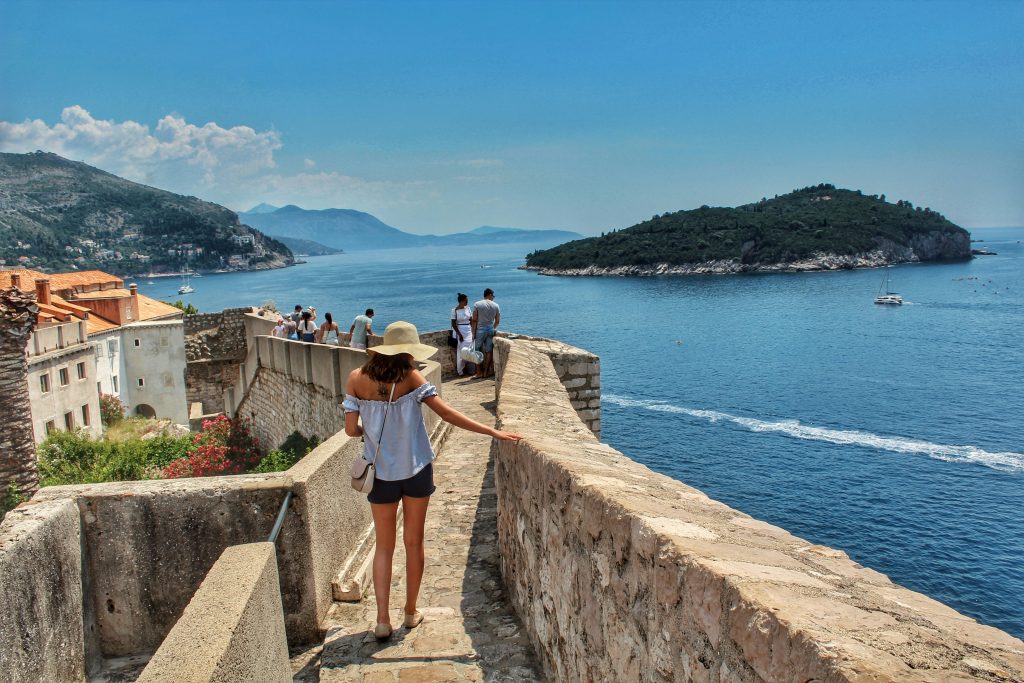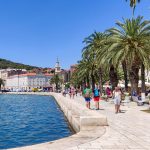June the 12th, 2024 – A McKinsey study has looked into Dubrovnik tourism issues, grouping it with the likes of Cancun and Marrakech, noting that it has very few tools at its disposal to properly control enormous visitor numbers.
As Poslovni Dnevnik/Dragana Radusinovic writes, the concentration of both Croatian and foreign tourists who will visit and spend a night in Dubrovnik will grow by as much as 70 percent per square kilometre by 2030. That will make the city of southern Croatia by the most densely populated tourist destination.
dubrovnik overtakes venice
This data comes from an analysis called “The state of tourism 2024” by the well known McKinsey consulting firm. Dubrovnik overtakes Venice, New York, Amsterdam, Paris and Rome in terms of tourist concentration, and McKinsey analysts warn that it is crucial that popular destinations are ready for the growth of global tourism. Dubrovnik tourism issues are far from new, but it seems that things might get worse before they improve.
“Recent satellite data shows that 80 percent of travellers visit only 10 percent of the world’s tourist destinations,” they stated from McKinsey, estimating that the number of travellers and the frequency of their trips will only increase as time goes on.
For Dubrovnik in particular, McKinsey analysts point out in the study that it is an intensively seasonal destination with approximately 20 times more inbound airline seats available for sale during the peak season in July and August than in the off-season in January and February. The density of Dubrovnik holiday rentals can reach around 90 percent of accommodation per square kilometre in the summer.
As a popular destination for Mediterranean cruises, Dubrovnik falls into the highest risk quantile in four of McKinsey’s six categories, despite the fact that it has begun to take significant steps in the fight against overcrowding. The city recently banned new private charter licenses in its historic Old Town district to counter rising rental costs for locals, and cruise schedules are being reorganised to better distribute the flow of visitors.
As for the very many Dubrovnik tourism issues, the level of dependence of the local economy on visitors is key. Then come the sheer density in the concentration of tourists, the overload of the ancient infrastructure and the devastating impact on the environment are considered high risk. The actual visitor experience and the local cultural heritage are actually in the lower risk zone.
dubrovnik tourism issues are similar to those in cancun and marrakesh
McKinsey’s study classifies Dubrovnik, along with Mexico’s Cancun and Morocco’s Marrakesh, among the destinations that are the most seasonally overloaded. That refers to the combination of an extremely high concentration of visitors with very limited possibilities for adequately managing the tourist flow.
Seasonal overload is one of the four archetypes of tourist destinations according to McKinsey’s research. Destinations under increased stress, those currently receiving limited numbers of visitors but showing signs of strained infrastructure, are Los Angeles, Manila and Mumbai.
Actively managed destinations that receive many visitors include Amsterdam, Bangkok and Dubai, while other popular destinations with balanced capacity that receive relatively fewer visitors and have implemented sophisticated tourist flow management systems. These include Abu Dhabi, Lima and Singapore.
McKinsey’s study on the state of tourism in 2024 points out that after a 75 percent drop in 2020, travel is on the way to full recovery by the end of this (2024) year. Domestic travel is expected to grow 3 percent annually and reach 19 billion overnight stays by 2030. In that very same period, international travel is expected to rise to a new historical average of nine billion realised overnight stays.
eastern europe is on the up, but can it manage?
Travel spending is expected to follow a similar trajectory, with an estimated 8.6 trillion US dollars spent by travellers this year, representing roughly nine percent of this year’s global GDP.
McKinsey estimates that most of this spending will go on trips close to home, so the tourism sector should take care of the needs of those travellers who don’t actually come from international destinations. The largest segment of travel after domestic travel is intra-regional, as people tend to make short trips to visit nearby countries.
Although the established source markets continue to represent the anchor of global travel, Eastern Europe, India and Southeast Asia are becoming fast-growing sources of outbound tourism. That is one of the messages of the McKinsey study, according to which, along with permanent tourist favourites, there will be some new destinations on travel maps coming soon.









